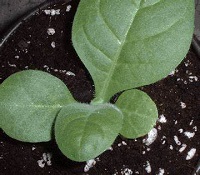Lv Xiaoyan, Jing Xia, Xue Lin, Xu Haiqing, Zhang Chao, Huang Jianxi
Tobacco growth information is an important basis for tobacco production management. Through a comprehensive understanding of the application of remote sensing technology in tobacco growth monitoring and yield estimation, the study aims to provide a scientific reference for the use of remote sensing technology in refined tobacco field management. Based on reviewing relevant literatures, the application of remote sensing technology in tobacco growth monitoring and yield estimation was systematically summarized from three scales of ground spectrum, UAV(unmanned aerial vehicle) remote sensing, and satellite remote sensing, and the prospect of further research was also discussed. (1)Based on the ground spectrum, the physiological and biochemical parameters (nitrogen, phosphorus, potassium, biomass, leaf area index, chlorophyll, etc.) of tobacco were estimated by reflectance spectrum and its different transformation forms, spectral index and spectral position variables, providing a basis for the diagnosis of tobacco growth, health status and maturity. Tobacco growth monitoring, yield estimation and quality evaluation could be realized. (2) UAV remote sensing technology could be used to extract tobacco areas on a small scale, monitor and estimate yield, but it could not monitor the subtle changes of tobacco due to the influence of the resolution, terrain and self stability of the camera. (3) With optical remote sensing data such as LandSat, SPOT, MODIS HJ-1, etc., as well as SAR data, by remote sensing image fusion, classification and other technologies, large-area tobacco field disease, growth monitoring and yield estimation could be achieved. The future research will focus on quantitatively studying the tobacco parameters by combining with multi-source and multi-platform remote sensing data, and conducting the dynamic monitoring of tobacco growth process on large scale by assimilation technology, thus to explore the optimal harvest time of tobacco.
